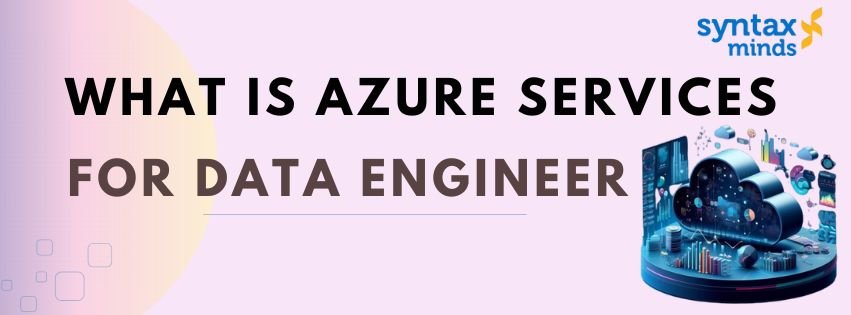Table of Contents
ToggleAZURE SERVICES FOR DATA ENGINEER
Azure services for data engineers are a set of cloud-based tools and platforms offered by Microsoft Azure to support data engineering tasks such as data ingestion, storage, processing, transformation, and analytics. These services allow data engineers to design, build, and maintain scalable and efficient data pipelines and data workflows in the cloud. Below is an overview of some of the key Azure services relevant to data engineers:
Azure Data Lake Storage (ADLS)
- Purpose: A scalable and secure data lake service designed for big data analytics workloads. It provides both hierarchical and flat storage structures, and is built to handle high volumes of structured, semi-structured, and unstructured data.
- Use Case: Data engineers use ADLS to store large amounts of raw data for further processing.
Azure Blob Storage
- Purpose: Object storage for unstructured data, similar to ADLS but more focused on general-purpose data storage, including large files, images, videos, logs, and backups.
- Use Case: Data engineers use Blob Storage for storing files, backups, and other large-scale data that will later be processed or analyzed.
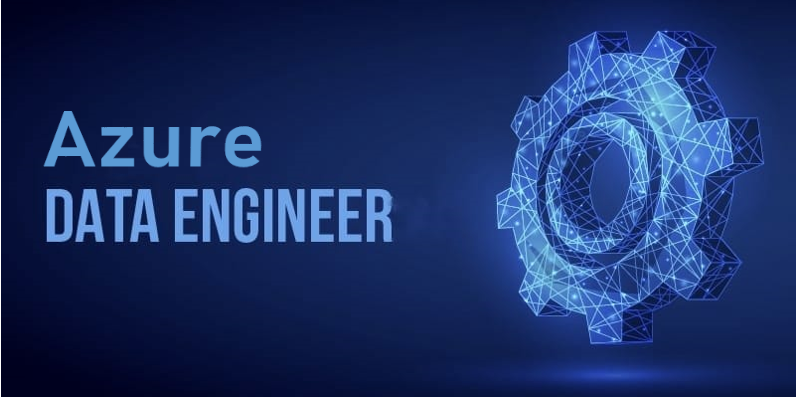
Azure Synapse Analytics (formerly Azure SQL Data Warehouse)
- Purpose: An integrated analytics platform that allows users to analyze large datasets. It combines big data and data warehousing capabilities and integrates with other Azure services like Azure Machine Learning and Power BI.
- Use Case: Data engineers use Synapse to build and manage data lakes, data warehouses, and run large-scale analytics. It enables data querying, transformation, and pipeline orchestration.
Azure Data Factory (ADF)
- Purpose: A fully managed ETL (extract, transform, load) service that helps automate and orchestrate data movement and transformation. It supports a wide range of data connectors and transformation activities.
- Use Case: Data engineers use ADF to design and schedule data pipelines that move and transform data across different systems, such as moving data from on-premises systems to the cloud, or processing data using custom scripts.
Azure SQL Database
- Purpose: A fully managed relational database-as-a-service (DBaaS) built on SQL Server. It allows you to host your SQL-based applications in the cloud.
- Use Case: Data engineers use SQL Database to store structured data that requires fast, reliable transactional processing. It’s often used for smaller data workloads or where SQL features like advanced querying, indexing, and scaling are needed.
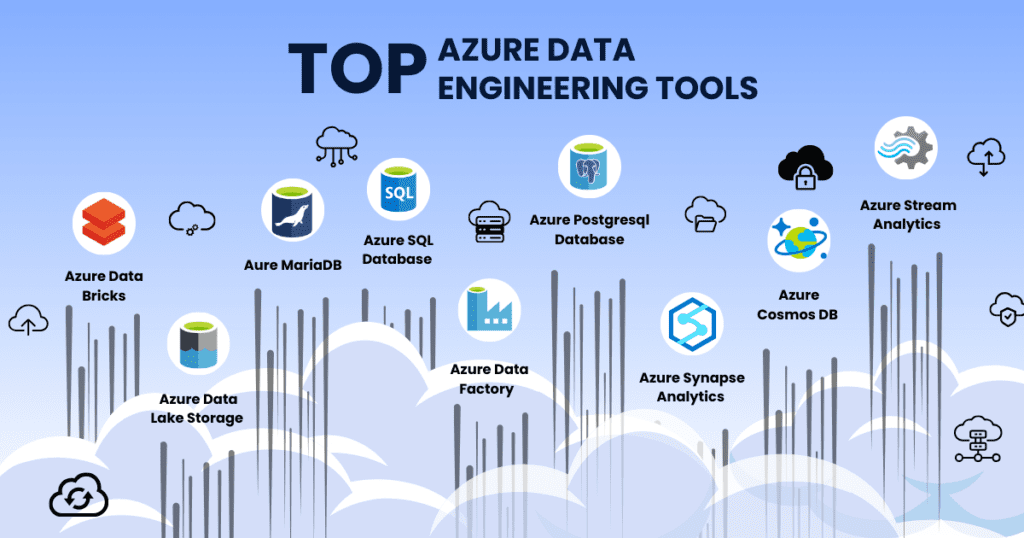
Azure Databricks
- Purpose: A cloud-based Apache Spark platform optimized for Azure that provides collaborative notebooks and integrated workflows for big data analytics, machine learning, and data engineering tasks.
- Use Case: Data engineers use Azure Databricks to process large volumes of data, build ETL pipelines, and run big data analytics tasks in a distributed computing environment.
Azure Stream Analytics
- Purpose: A real-time analytics service that ingests, processes, and analyzes streaming data from devices, sensors, and logs.
- Use Case: Data engineers use Stream Analytics to process and analyze real-time data streams, such as telemetry data from IoT devices or live data from social media feeds.
Azure HDInsight
- Purpose: A fully managed cloud service that makes it easy to process big data using open-source frameworks like Hadoop, Spark, Hive, and HBase.
- Use Case: Data engineers use HDInsight to run large-scale data processing tasks, including batch processing and data transformation, using popular open-source technologies.
Azure Machine Learning
- Purpose: A cloud-based machine learning service that allows data engineers and data scientists to build, train, and deploy machine learning models.
- Use Case: Data engineers use Azure ML to automate machine learning pipelines, preprocess data, and manage the entire model lifecycle.
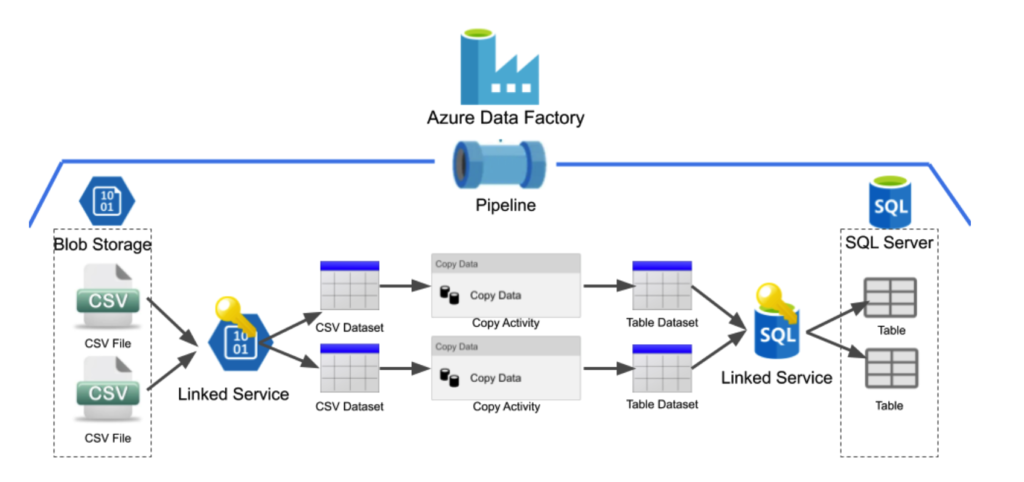
Azure Event Hubs
- Purpose: A fully managed real-time event streaming platform capable of ingesting millions of events per second.
- Use Case: Data engineers use Event Hubs to ingest large-scale event data from IoT devices, applications, or logs, which can then be processed and analyzed.
Azure Cosmos DB
- Purpose: A globally distributed, multi-model NoSQL database service that provides fast, scalable, and low-latency access to data.
- Use Case: Data engineers use Cosmos DB for storing and processing non-relational data, especially for globally distributed applications.
Azure Data Explorer (ADX)
- Purpose: A fast and highly scalable data exploration service for log and telemetry data. It is designed for querying large datasets with low-latency.
- Use Case: Data engineers use ADX for analyzing large datasets from sources like monitoring tools, logs, or IoT data in real-time.
Azure Key Vault
- Purpose: A cloud service for securely storing and managing sensitive information such as API keys, passwords, and certificates.
- Use Case: Data engineers use Key Vault to securely manage and access secrets that are used in data processing pipelines and workflows.
Azure Logic Apps
- Purpose: A service that allows you to automate workflows and integrate services without writing code. It can be used to trigger events, handle tasks, and integrate different data systems.
- Use Case: Data engineers use Logic Apps to automate ETL processes and integrate data from different sources, like sending data from an SQL database to a data lake or calling APIs.
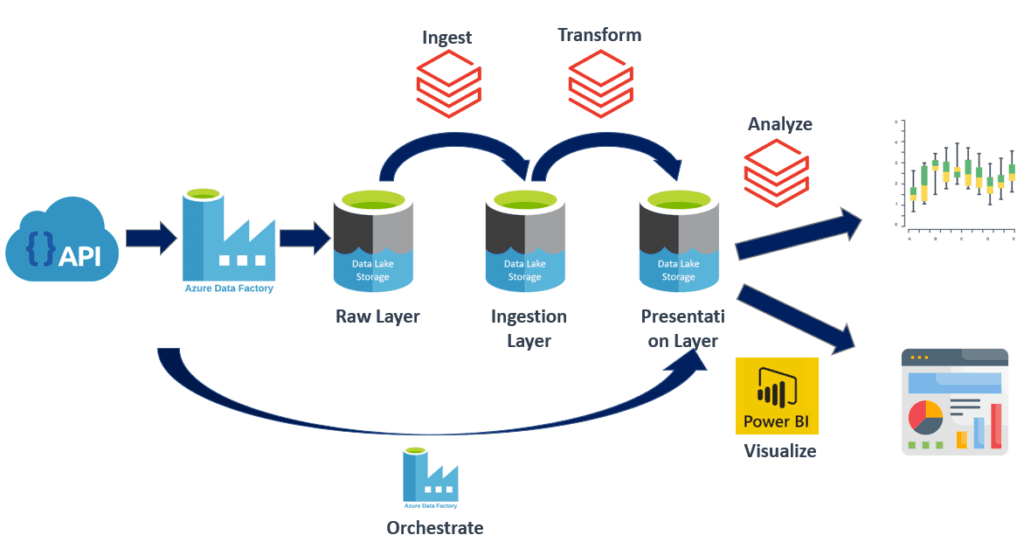
Power BI (for Data Engineers)
- Purpose: A business intelligence service that allows users to visualize and analyze data, create dashboards, and share insights.
- Use Case: Although Power BI is more commonly used by analysts and business users, data engineers may integrate it with Azure data services for reporting, monitoring, and sharing insights from the data pipelines they manage.
Summary:
For data engineers, Azure provides a comprehensive suite of services for data storage, processing, orchestration, and real-time analytics. By leveraging these tools, data engineers can efficiently build scalable, secure, and high-performance data architectures in the cloud. Common tasks like ingesting data, transforming it, running analytics, and integrating various systems can be managed end-to-end with Azure’s ecosystem.

